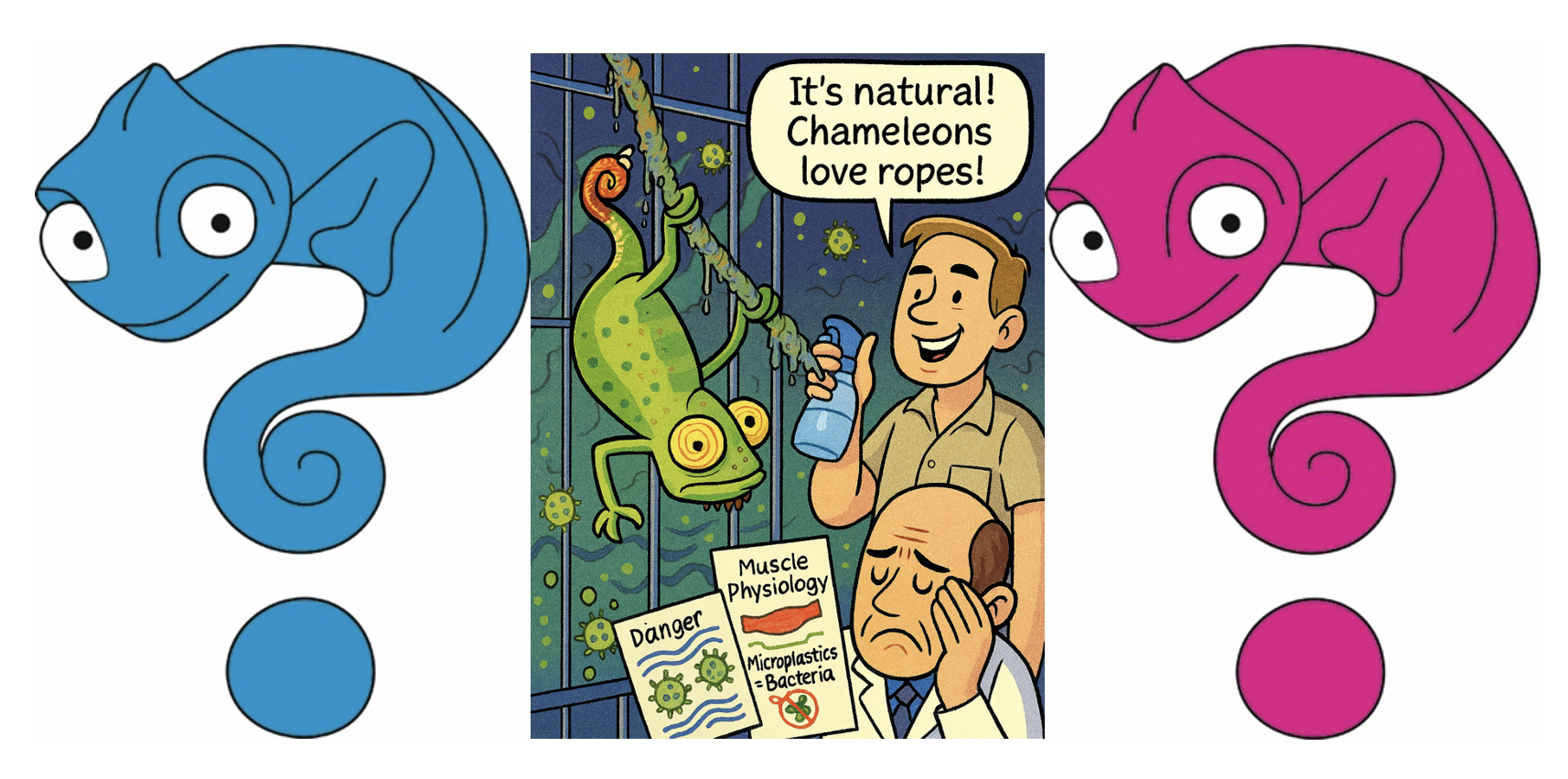Myth 22: “Chameleons Love Ropes”

The Misguided Trend
Many keepers decorate their chameleon enclosures with ropes, often inspired by setups for other reptiles like hammocks for bearded dragons. They claim ropes are "natural," that they "imitate vines in the wild." But this is a misinterpretationof both nature and chameleon biology.
Yes, chameleons sometimes use vines and lianas in the wild—if they have no other option.
But they do not prefer them. They do not enjoy them. They struggle on them.
They may climb upward on vines, but they hate horizontal or diagonal orientation. They often lose balance, twist awkwardly, or flip upside down trying to stay upright. Even on vertical vines, they rotate and reposition constantly, clearly uncomfortable.
The Biomechanical Truth
Chameleons are not acrobats. They are not monkeys. They are not built for balance.
Balancing on ropes requires dynamic muscle fibers—used for quick, real-time adjustments of body position and weight distribution. Monkeys have these. Chameleons do not.
Chameleons are equipped with static muscle fibers—designed for gripping, holding, and staying still. Their physiology is built to anchor themselves in wind and foliage with minimal energy—not to dance on a tightrope.
This is a fundamental difference in muscle physiology and physics of movement. Chameleons are built for fixation, not fluidity.
The Hidden Dangers of Ropes
Even beyond discomfort, ropes pose serious risks—especially in captivity.
If Made of Plastic:
They deteriorate under UV light and temperature changes
They release toxic fumes and microplastics
These accumulate in poorly ventilated cages, leading to:
Sterility
Organ failure
Chronic stress
Death
These effects accumulate over time. Once the threshold of tolerance is reached, homeostasis collapses, and the chameleon suffers, stresses, and dies.
If Made of Natural Fibers:
They absorb water during misting or fogging
They become a breeding ground for bacteria and fungi
They release spores into the air—causing infections or allergies in humans and animals
They stay wet for hours, and if a chameleon sleeps on them:
They can develop plantar lesions
These infections are hard to detect until it's too late
Microdebris Risks:
Ropes shed tiny fibers—plastic or organic
These can be ingested or inhaled
They can enter the conjunctival sac during eye cleaning
Resulting in:
Severe irritation
Inflammation
Blindness
And a blind chameleon is a dead chameleon. It cannot hunt. It cannot regulate its physiology. It cannot survive.
Even if force-fed, it will die.
Ingestion Risk
Even "natural" ropes—hemp, linen, coconut—can be accidentally ingested. A single fiber swallowed during tongue projection can cause constipation, impaction, and death.
The Verdict
No, ropes don't kill 100% of chameleons. But the risks are numerous, deadly, and unavoidable. There is no safe workaround.
Ropes cause discomfort for sure. But even worse, they introduce unmitigable risks—from biomechanical strain to toxic exposure, bacterial infection, and blindness.
So let's be clear:
Ropes are strictly NOT recommended for chameleon cages.
They are a mistake born of imitation, not understanding. They are a hazard disguised as décor.
Choose branches. Choose stability. Choose safety.
Choose what your chameleon actually needs—not what looks good to you.